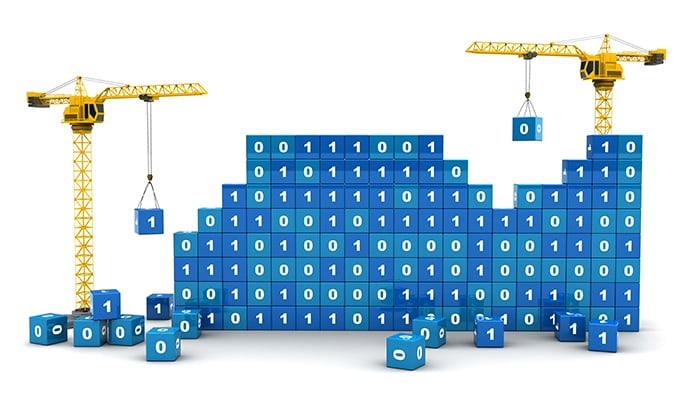How To Monetise Services And IoT: Better Articulate Value
Oct 19, 2018 • Features • Management • Connected Field Service • Jan Van Veen • moreMomentum • field service • IoT • Service Management • Managing the Mobile Workforce
Jan Van Veen continues his latest exclusive Field Service News series on how companies can monetise their services with IoT as he turns his attention to something many companies struggle with - better articulating their value proposition...
Central question: How to monetise Services & IoT
Many manufacturers experience pressure on growth, revenue and margins.
Their products and services are being commoditised. Competition from lower-cost alternatives are arising. On the other hand, there are huge opportunities with new technologies, value propositions and business models.
One of the important trends is that value proposition and offerings become more data-driven and more service oriented. However, many manufacturers are product-driven businesses which do not fully appreciate the value service has for their customers and own business.
So, one of the central questions is: How to Monetise Services and IoT in order to Grow in a Disruptive World?
The capability to monetising service and IoT is mission-critical for sustainable performance and existence of manufacturing:
In a series of articles, we cover 3 critical steps which make the difference between success and failure in monetising services and IoT:
- Solve bigger customer problems, which is all about creating significantly more value for customers.
- Articulate the value
- Build internal momentum for monetisation
Common mistakes
Too often we see that (new) services, solutions or features are promoted without connecting the dots to their bigger problems.
For example, a client of mine – a major equipment manufacturer – experienced the power of explicitly connecting the dots. They were launching the first version of a portal to serve DIY clients which had their own maintenance departments.
They initially presented the benefit of the portal with many online manuals (version 1 of the portal) as a way to save time every time a maintenance engineer of their client would need to find the right manual. It appeared to be tough to sell paid subscriptions for this portal.
Only when the manufacturer articulated their view of the key problems of their clients’ maintenance departments and how the portal would solve these problems, did the clients get really interested.
The dominant problems of the maintenance departments were not finding manuals, but the daily pressure to increase availability and uptime at shrinking budgets and that, that their engineers had slow learning curves due to low volume of certain problem-solving work.
"A portal which would evolve into a broad toolset for best practices, troubleshooting and maintenance management was considered a crucial asset..."
A portal which would evolve into a broad toolset for best practices, troubleshooting and maintenance management was considered a crucial asset.
Furthermore, we often see manufacturers thinking and talking about features and activities, instead of customer value. Clients only pay for the value they perceive, not for what you do.
A striking example were field service engineers of another client, who would spend a full day in pairs to install equipment which was already delivered a couple of days before. A few days after installation, another colleague would visit the client for training and commissioning.
The two engineers would unpack all components and assemble the components, connect it to a couple of other devices from different brands which involved many integration issues, connect their equipment to the computer network – which involved loads of security and networking issues which the engineers had to solve with IT departments – which by nature tend to be reluctant.
And here is how they briefed their client when they started the job: “We are here to unbox the components, put the bits and pieces together and make sure everything is there, so the trainer is ready to go……”
Their client did not even know what kind of complex integration problems the engineers were solving. Actually, their client even wondered why his supplier did not have more mature and efficient processes to get the job done. And by no means are the engineers to blame for this.
Some practical solutions
You can easily start improving on these common mistakes:
Build a compelling story of your view of your customers' challenges, opportunities and problems, which is validated by (a segment of) your customers. Relate this as much as possible to strategic or crucial priorities of your clients.
- Include a view on how your clients could best pursue these opportunities and solve these problems. Don’t make this a big thing, just start with a first strawman version and let it grow in time.
- Link the characteristics and benefits of your solutions and services to the view of your customers.
- If possible, quantify the benefits in terms of the strategic or critical priorities.
- Ensure that your value story is well articulated in your messaging to (the specific segments of) your clients and is consistent across all touch points. This may involve some staff training..
The Benefit
Manufacturers which are better in articulating their value see that both customer-facing personnel and their clients better see the value, better appreciate the value and therefore also find it more logical pay for this value.
Hence, these manufacturers generate more new revenue streams with higher margins and differentiate more from their competition.
Give monetisation of services and IoT an Impulse
If you want to accelerate the monetisation of your (new) services and IoT, join our upcoming Impulse Sessions on “How to Monetise Service and IoT”. These are full day interactive meetings with like-minded peers, during which we will exchange experience, insights and challenges.
Book your seat @ https://moremomentum.eu/impulse-sessions/
Essence
Delivering value to customers does not automatically also capture the value – that is, monetise the value delivered. If the delivered value is not clearly articulated for clients (and staff), both will take it for granted or maybe even not recognise it.
Jan Van Veen, is Founder of MoreMomentum
Be social and share





















 Field Service News is published by 1927 Media Ltd, an independent publisher whose sole focus is on the field service sector. As such our entire resources are focused on helping drive the field service sector forwards and aiming to best serve our industry through honest, incisive and innovative media coverage of the global field service sector.
Field Service News is published by 1927 Media Ltd, an independent publisher whose sole focus is on the field service sector. As such our entire resources are focused on helping drive the field service sector forwards and aiming to best serve our industry through honest, incisive and innovative media coverage of the global field service sector.
Leave a Reply